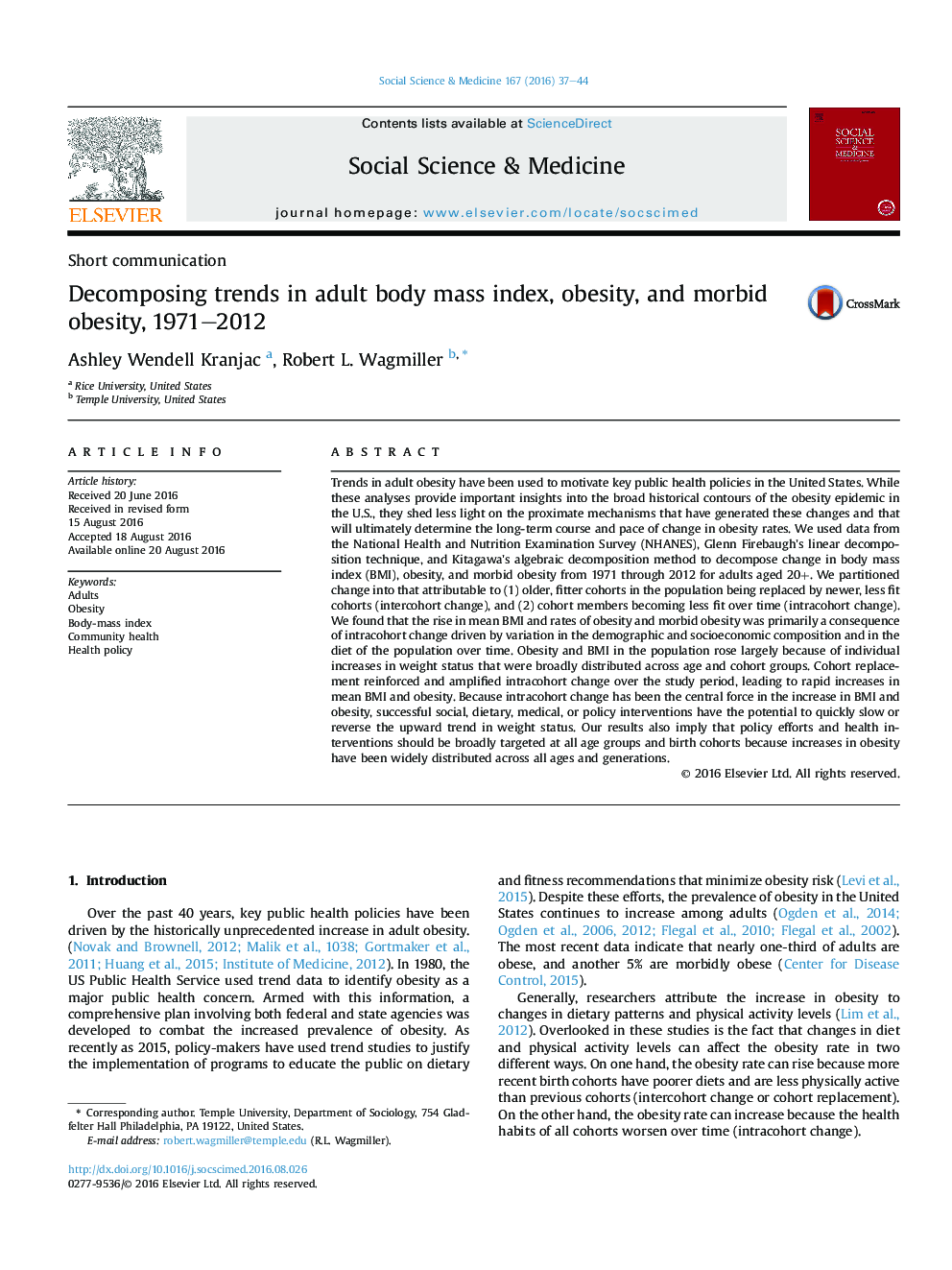| کد مقاله | کد نشریه | سال انتشار | مقاله انگلیسی | نسخه تمام متن |
|---|---|---|---|---|
| 5046956 | 1476002 | 2016 | 8 صفحه PDF | دانلود رایگان |
- We decompose change in adult BMI and obesity from 1971 through 2012.
- We find that the rise was primarily a consequence of intracohort change.
- Meaning that increases in weight were broadly distributed across age/cohort groups.
- Increases were driven by variation in the demographic/socioeconomic composition.
- Interventions have the potential to quickly slow/reverse the upward trends.
Trends in adult obesity have been used to motivate key public health policies in the United States. While these analyses provide important insights into the broad historical contours of the obesity epidemic in the U.S., they shed less light on the proximate mechanisms that have generated these changes and that will ultimately determine the long-term course and pace of change in obesity rates. We used data from the National Health and Nutrition Examination Survey (NHANES), Glenn Firebaugh's linear decomposition technique, and Kitagawa's algebraic decomposition method to decompose change in body mass index (BMI), obesity, and morbid obesity from 1971 through 2012 for adults aged 20+. We partitioned change into that attributable to (1) older, fitter cohorts in the population being replaced by newer, less fit cohorts (intercohort change), and (2) cohort members becoming less fit over time (intracohort change). We found that the rise in mean BMI and rates of obesity and morbid obesity was primarily a consequence of intracohort change driven by variation in the demographic and socioeconomic composition and in the diet of the population over time. Obesity and BMI in the population rose largely because of individual increases in weight status that were broadly distributed across age and cohort groups. Cohort replacement reinforced and amplified intracohort change over the study period, leading to rapid increases in mean BMI and obesity. Because intracohort change has been the central force in the increase in BMI and obesity, successful social, dietary, medical, or policy interventions have the potential to quickly slow or reverse the upward trend in weight status. Our results also imply that policy efforts and health interventions should be broadly targeted at all age groups and birth cohorts because increases in obesity have been widely distributed across all ages and generations.
Journal: Social Science & Medicine - Volume 167, October 2016, Pages 37-44
